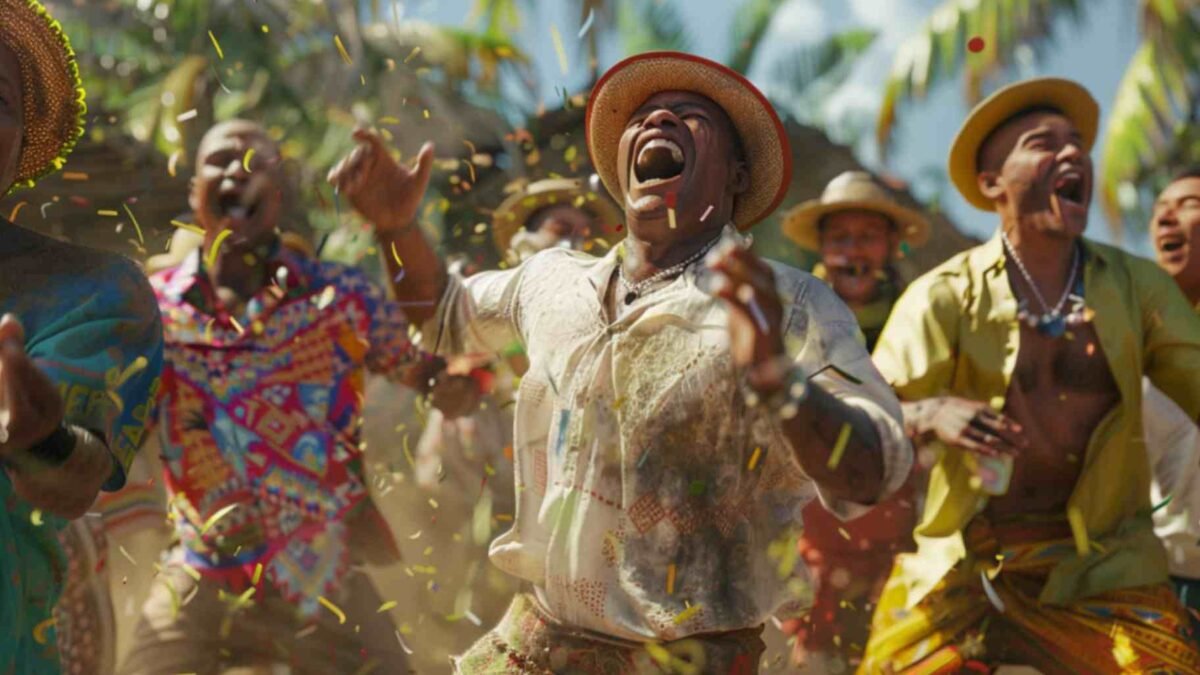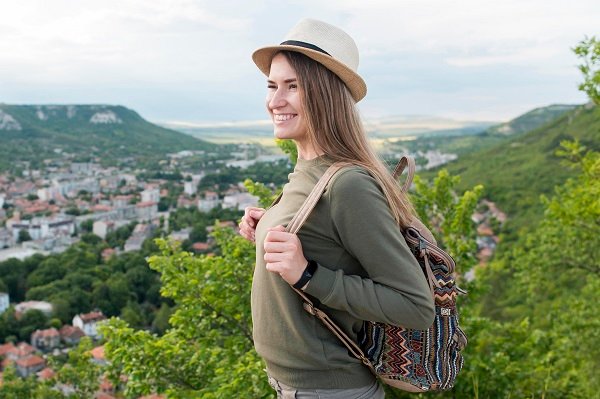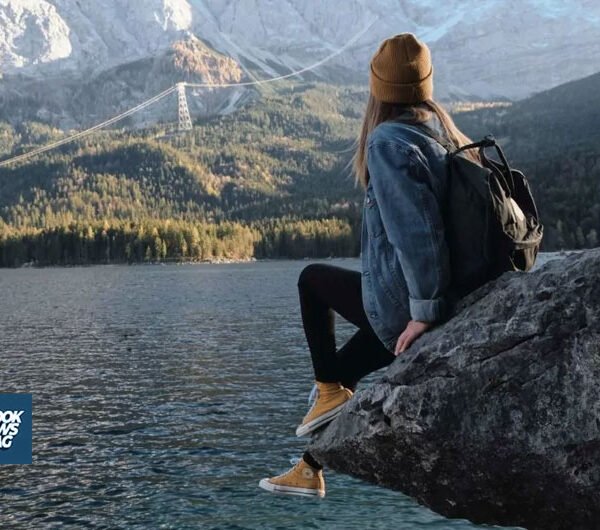The Best Nature Photography Tips for 2024: A Complete Overview
From breathtaking landscapes to intimate wildlife encounters, nature photography allows us to capture and share the beauty of the natural world. As we enter 2024, interest in nature photography continues to grow as more people seek to document their adventures, advocate for the environment, and create stunning artistic visions.
In this complete guide, we will explore essential tips, techniques, and insights to help you take your nature photography to the next level in the coming year. Whether you are a beginner looking to learn the basics or a seasoned pro seeking inspiration, read on to discover the best practices for planning and executing photographic journeys of natural wonder. With dedication and the right approach, 2024 promises to be an outstanding year for capturing dazzling images of landscapes, wildlife, and botanicals across various destinations.
Introduction to Nature Photography
Nature photography encompasses images of untouched natural environments and wildlife. It ranges from vast sweeping panoramas of mountain peaks to intimate portraits of individual flowers and insects. The goal of nature photography is to capture the splendor, intricacies, and power of the natural world and inspire awe for nature in viewers.
In recent years, interest in nature photography has skyrocketed, thanks in part to the growing popularity of National Parks, hiking, and outdoor recreation. Social media has also played a role, allowing nature photographers to share their inspiring images with vast global audiences. As we seek balance from increasingly urbanized and technology-driven lives, beautiful and emotive photographs of the natural world provide an antidote to many modern anxieties.
Beyond being a creative outlet, nature photography also serves scientific and conservationist purposes. Photographs documenting the health and biodiversity of ecosystems can inform conservation efforts by scientists and activists. Overall, nature photography invites us to slow down and bear witness to natural wonders that are vital to our collective wellbeing.
The Basics of Nature Photography
Before embarking on your photographic journey, it is important to understand some core techniques and considerations that form the foundation of quality nature photography. Let’s explore the essential equipment, knowledge of lighting, and compositional skills needed to capture stunning natural images.
Camera and Lenses
A digital single lens reflex (DSLR) camera that allows for interchangeable lenses gives the most flexibility and highest image quality for nature photography. Important features to consider are weather sealing, strong battery life, fast autofocus capabilities, and high resolution. For lenses, telephoto options like 70-200mm or 100-400mm are excellent choices for compressing distances and capturing faraway subjects like wildlife. Wide-angle lenses between 16-35mm can capture expansive landscape vistas and scenes. Macro lenses allow you to reveal the microscopic details and textures of flowers, insects and more.
Key Camera Features:
- Weather sealing
- Fast autofocus
- Interchangeable lens mount
- Strong battery performance
Recommended Lenses:
- Telephoto – 70-200mm or 100-400mm
- Wide-angle – 16-35mm
- Macro – 60mm or 105mm
Tripods and Camera Support
As many nature photography situations involve slower shutter speeds to allow adequate light, a sturdy tripod is crucial for minimizing blur caused by camera shake. Tripods with flexible legs allow you to position your camera lowered for macro flower shots or uneven terrain. Ball heads provide the most maneuverability for composing shots from challenging positions.
Filters and Lens Attachments
Lens filters serve important creative and protective functions. Polarizing filters deepen blue skies and reduce unwanted glare and reflections. Neutral Density (ND) filters allow you to achieve slower shutter speeds, enabling you to create ethereal, misty effects on waterfalls and rivers. Graduated ND filters balance exposure between bright skies and darker foregrounds. Ultraviolet (UV) filters protect the front of your lens.
Useful Filters/Attachments:
- Polarizing
- Neutral density
- Graduated neutral density
- Ultraviolet lens protection
- Macro ring lights or flashes
Camera Settings
While most modern cameras have excellent automatic modes, learning to manipulate settings like aperture, shutter speed, and ISO will give you more creative control. Wider apertures (lower f-stop numbers) create blurred backgrounds and shallow depth of field – great for wildlife portraits. Faster shutter speeds freeze action shots of birds in flight or running creatures. Higher ISO allows shooting in lower light conditions. Most importantly, move beyond automatic mode to leverage the capabilities of your camera gear.
Core Camera Settings:
- Aperture – controls depth of field
- Shutter speed – controls motion
- ISO – controls image brightness
Exposure Triangle:
- Aperture
- Shutter speed
- ISO
Power Sources
Carrying extra camera batteries and backup power sources is critical for multi-day hikes or travel off the grid. Look into high-capacity rechargeable lithium-ion battery packs. Bringing a solar panel charger can provide renewable charging during daylight hours. Ensure you have enough power to keep shooting when working in remote field conditions.
Battery/Charging Considerations:
- High-capacity lithium-ion batteries
- Backup batteries
- Solar panel chargers
Accessories
A range of useful accessories can enhance your experience in the field. Sturdy hiking packs keep all your gear protected and organized during treks to shooting locations. Silicone camera skins offer impact protection if you drop your gear. Sensor cleaning kits are invaluable for removing dust and particles in harsh or windy conditions. Lens cleaning cloths and spray keep optics smudge-free for optimal image quality.
Helpful Accessories Include:
- Protective camera skins
- Sensor cleaning kits
- Microfiber lens cloths
- Sturdy, weatherproof packs
Understanding Natural Light
High-quality nature photographs rely on optimal natural lighting. As such, it’s important to master shooting during the golden hours after sunrise and before sunset when soft, warm light produces stunning images. Seek out backlighting and side-lighting to create atmospheric rim and halo effects around subjects. Diffused lighting from cloud cover generates soft shadows, while direct sunlight creates bold contrasts. Use reflectors to redirect sunlight onto shaded areas of a scene. Learn to leverage all natural light conditions to your advantage.
Natural Lighting Situations:
- Golden hour light
- Backlighting
- Diffused/overcast light
- Direct sunlight
Enhancing Light:
- Reflectors
- Flash fill
Composition
Strong compositional skills separate exceptional nature photographs from the ordinary. Leading lines, S-curves, and diagonals draw viewers into an image while adherence to the rule of thirds creates balanced scenes. Negative space around subjects isolates their beauty. Shooting from angles on the ground-level or from elevated views provides more dramatic perspectives. Approach your subjects from multiple vantage points and lens focal lengths, then review your images to determine the most aesthetically striking compositions.
Key Composition Tips:
- Rule of thirds
- Leading lines
- Framing
- Negative space
- Creative angles and perspectives
By mastering the creative foundations above – understanding the right gear, lighting techniques, and compositional conventions – you equip yourself to capture stunning nature images. Next let’s transition to more advanced skills needed to tackle subjects like landscapes, wildlife, and macro photography.
Advanced Techniques and Tips
Now that we’ve covered core fundamentals, we can dive deeper into specialized methods tailored to different nature photography subjects and scenarios. Let’s explore techniques for breathtaking landscape panoramas, intimate wildlife shots, and the micro world of flower and insect macro photography.
Landscape Photography
Immense mountain vistas, winding rivers, and forests create boundless opportunities for jaw-dropping landscapes. Here are some advanced pointers:
Wide-Angle Lenses – Ultra wide-angle focal lengths between 10-24mm exaggerate perspectives and expand the visible scene to portray expansive scenery.
Panoramas – Take sequences of images with 30-50% overlap, then stitch together in post using editing software to create sweeping panoramas encompassing entire mountain ranges and valleys.
Grad ND Filters – Use graduated neutral density filters to balance overly bright skies with darker landforms and waterways in the foreground.
Foreground Interest – Compose scenes leveraging leading lines that direct viewers into frame and objects of interest placed purposefully throughout image layers.
Shoot Details – Use wide apertures for maximum depth of field sharpness so both nearby flowers/trees and distant background elements appear crisply focused.
Wildlife Photography
Tracking elusive animals in natural habitats requires patience and specialized techniques:
Telephoto Lenses – Telephoto lenses between 200mm to 800mm enable framing tight shots of distant creatures.
Camouflage/Blinds – Stay hidden using camo, blinds, or natural vegetation to not startle easily frightened subjects.
Timing – Learn animal behaviors to target peak activity cycles for feeding, migration, mating rituals.
Burst Mode – Activate continuous high speed burst shooting to machine gun sequence rapidly moving creatures.
Motion Blur – Leverage slow shutter speeds around 1/30s to creatively blur wingbeats and running movements.
Lighting – Concentrate efforts during dawn/dusk golden hours when warm lighting best illuminates fur and feathers.
Macro Photography
With specialized macro lenses, glimpse directly into the visual intricacies of flowers, insects, mushrooms and more.
Macro Lenses – Macro primes offer 1:1 reproduction for life-size capture of tiny things like flower stamens and ants.
Tripods – Tripods prevent visible camera shake which ruins critical sharpness needs for macro photography.
Apertures – Stop down apertures to f/16 or higher to widen depth of field and keep ultra-close subjects entirely in focus.
Portable Diffusers – Carry foldable diffusers to scatter sunlight create softer shadows on macro subjects.
Colored Lighting – Off-camera colored flash gels cast complementary colored light onto flower petals or nature scenes.
Compositions – Isolate abstract sections of plants/bugs by filling frames to spotlight patterns, colors, and designs found in nature.
Dedicate time learning the nuances of landscapes, wildlife, and macro photography. Combine those technical skills with creativity and persistence in the field chasing the perfect confluence of stunning subjects and sublime natural lighting. Next let’s survey ideal destinations ripe for stunning nature photography opportunities.
Nature Photography Destinations
If planning a dedicated nature photography adventure for 2024, prioritize locations offering vibrant ecosystems and biodiversity. From lush rainforests to sapphire waterfalls, here are some bucket list locales sure to thrill:
Yellowstone National Park
- Iconic geysers and geothermal pools
- Diverse megafauna – bears, bison, elk, wolves
- Grand prismatic spring
The Amazon Rainforest
- Unparalleled biodiversity – birds, insects, mammals
- Mystical cloud forests
- Flooded igapó tree species
The Swiss Alps
- Majestic snow-capped peaks
- Glacial valleys and waterfalls
- Charming mountain wildflowers
Alaskan Wilderness
- Massive national parks full of wildlife
- Glaciers and fjords meeting the sea
- Meadows blanketed in fall colors
The Atacama Desert
- Dramatic red rocks and moonscapes
- Clear night skies for astronomical phenomena
- Flamingos visiting high-altitude lagoons
The Everglades
- Alligators, crocodiles, and wetland species
- Sunrises/sunsets over grassy waterscapes
- Swaths of water lilies
Death Valley National Park
- Below-sea-level salt flats
- Contrasting valleys, canyons, and dunes
- Stars unobstructed by light pollution
Research locations offering terrain and subjects aligned with your photographic passions – whether intimate wildlife encounters or grand landscape vistas. Time trips to migrate patterns, mating seasons, fall foliage or night sky phenomena to maximize wildlife sightings and ephemeral beauty. With dedication and planning, you can immerse yourself in boundless natural splendor to chase amazing photographic opportunities.
The Impact of Nature Photography
Beyond creating artistically stunning images, nature photography can serve many greater societal purposes from inspiring conservation to educating the masses. As we enter 2024, let’s explore how thoughtful photographic projects can drive positive environmental impacts.
Raising Awareness
Visually compelling photographs possess immense power to tell stories and convey messages – making them ideal mechanisms for raising awareness. Moody images of depleted rainforests shrouded in smog or trapped animals struggling against ocean trash ignite emotional responses and concern. Displaying such images publicly through competitions, magazines, social media and art installations informs and mobilizes mindsets. Activists groups like National Geographic serve critical roles curating and publishing consciousness-raising nature photography.
Scientific Documentation
Methodical photographic documentation helps scientists track environmental changes over time – a vital form of visceral evidence leveraged in climate change research. Timelapse series illustrate glacial recession and loss of polar ice caps. Population changes become apparent by comparing wildlife images across decades. Photographically monitoring the health and biodiversity of ecosystems supports critical conservation science initiatives and policymaking to protect endangered species and habitats.
Encouraging Exploration
Publishing vibrant photographs of National Parks and remote natural wonders motivates appreciation and visitation from an increasingly urbanized population detached from nature. Photography awakens curiosity regarding endangered rainforest ecosystems, rare species, and fragile alpine tundras that require public support to actively value and conserve. Spectacular images serve as positive reinforcement, reminding us the vitality and magic to be rediscovered by spending time immersed in nature.
In the age of climate change, nature photographers supply an urgent reminder of fragile beauty we risk losing, while also providing scientific records of environmental shifts occurring across landscapes and species. Moving into 2024, leverage your photography not just for art’s sake but to galvanize deeper public connections sparking activism to protect and restore ecosystems.
Post-Processing and Editing
Post-processing plays a crucial role in transforming raw nature images into portfolio-ready photographs by adjusting color, contrast, sharpness, and more. While controversial if overdone, slight editing enriches images in ways our eyes don’t perceive – as long as the authenticity and natural integrity of the original scene remain intact. Here we will explore ethical editing techniques tailored for nature photography.
Software
Specialized software provides granular control over the editing workflow. Adobe Lightroom offers an intuitive interface for applying comprehensive enhancements from creative color grading to lens profile corrections. Adobe Photoshop adds capacity for more targeted retouching like precision masking. Ensure your software and computing power can efficiently handle high-resolution RAW image sequences from modern DSLRs.
Recommended Software:
- Adobe Lightroom
- Adobe Photoshop
- Aurora HDR
- Luminar
Ethical Enhancement
When editing nature photographs, adhere to principals of honesty and ethical integrity where adjustments augment rather than dramatically distort reality. Boujee presets creating oversaturated neon tones undermine authenticity. Maintain fidelity to genuine lighting and color that originally existed on location. Subtle moves like balanced sharpening, noise reduction or contrast curves to create depth simulate how our eyes perceive a scene naturally. Prioritize expressing nature’s elegance through ethical subtleties over flashy manipulation.
Editing Best Practices:
- True-to-life white balance
- Non-destructive workflow
- Subtle contrast and color corrections
- Noise reduction and sharpening masks
Backup and Storage
Given the irreplaceable value of field images, implement robust backup and storage protocols. Utilize cloud storage services like Dropbox or external hard drives to redundantly archive edited image libraries so originals can never be lost. As collections grow over seasons and years, streamlining hierarchies using date-based folder structures or tagging keywords keeps editing efficient. Invest time in your images not just capturing in camera but thoughtfully organizing afterwards.
Storage Tips:
- Cloud syncing
- External hard drives
- Date and keyword cataloging
Treat post-production with as much care and respect as time in the field. Thoughtful editing preserves natural authenticity while subtly enhancing images to match human optical perception. By archiving with diligent backups, you protect irreplaceable memories for decades to come revisiting, exhibiting and sharing your most moving experiences.
The Future of Nature Photography
As cameras and software continuously advance, nature photography will continue evolving as a creative medium for capturing our planet’s splendor. More photographers now explore multimedia storytelling leveraging video, audio and emerging technologies like drones or remote trigger systems to immerse audiences in truly engaging experiences conserved through photography. Let’s envision some exciting frontiers ahead.
Drones and Remote Capture
Drones grant access to breathtaking aerial perspectives previously inaccessible while minimizing environmental disruption through low-impact remote capture. Sapphire glacial pools, braided river deltas or herd migrations appear radically transformed from above. Meanwhile, innovations like robotic camera bugs or motion-triggered systems promise stationary equipment remaining remotely deployed for weeks autonomously capturing rare wildlife behaviors impossible witnessing otherwise.
Emerging Remote Capture Tools:
- Camera-equipped drones
- Robotic trigger bugs
- Timelapse/motion systems
Digital Storytelling
The multimedia nature documentary genre continues gaining popularity, blending still images with video, audio commentary from photographers, infographics, and animations to fully contextualize stories behind captivating encounters with threatened species and environments. Platforms like Instagram, YouTube and dedicated conservation media leverage these immersive formats expanding the impact photography projects resonating with mass audiences.
Interactive Storytelling Mixes:
- Photographs
- Behind-the-scenes video
- Audio narration
- Text, data visualizations
Camera and Lens Innovations
We live in a renaissance era of camera technology. Mirrorless systems keep gaining ground competing with bulkier DSLRs by trimming size/weight while maintaining top-notch quality. Lightweight fixed aperture superzoom lenses like the Nikon PF 500mm f/5.6 VR allow handholding to track distant wildlife with incredible optical performance identical to heavier pro lenses. Computational photography leverages algorithms and AI to expand creative possibilities like simulated shallow depth of field and extreme low light capabilities surpassing physical limitations of sensor and lens hardware.
Meanwhile steady gains in megapixel counts, improved dynamic range for balancing shadows and highlights, and noise reduction deliver ever-more detailed images under challenging field conditions. Testing innovations like in-body stabilization, animal eye/face detect autofocus modes, focus stacking for extended depth of field, and built-in intervalometers extends creative possibilities capturing nature’s wonders.
Camera and Lens Innovations:
- Mirrorless systems
- Lightweight supertelephotos
- Computational photography
- Higher megapixels/dynamic range
- Animal eye/face detect
- Built-in intervalometers
While post-processing handles much optimization historically requiring ancillary gear while shooting, expect smarter cameras to continue bridging gaps handling technical adjustments, focus stacking, HDR and pano stitching automatically with processed JPGs or RAW files requiring less editing intervention upon return. In coming years, technological progress expands creative possibilities while reducing gear burdens trekking through the field.
Conclusion
Our planet overflows with natural grandeur from Zen forests to rich biodiversity ripe for photographers to admire and advocate for through imagery. As governments and scientists sound alarms about climate change, careless resource harvesting, and species decline, the work of nature photographers becomes more urgent than ever before – to shine light on fragile beauty and ecosystems at risk.
Through dedication to ethical practices both capturing pristine origins and subtly elevating scenes post-production, stunning photographs awaken emotions stirring audiences to action preserving threatened habitats and creatures for generations yet to be. Technique guides merely scratch the surface. True mastery emerges through passion and grit chasing fleeting moments of wonder igniting purpose awakening guardianship in viewers.
Pick up your camera in 2024 to venture onward visual pilgrimages seeking rare natural encounters. Allow windswept plains, creatures great and small, the choreography of stars or play of seasons on ancient bark kindle imagination and reverence within your beating heart reflected through a viewfinder. Not just for personal fulfillment but for the forests, glaciers and fellow earthlings without voices relying on imagery to share their silent, desperate plight bartering for liberation. Godspeed.










